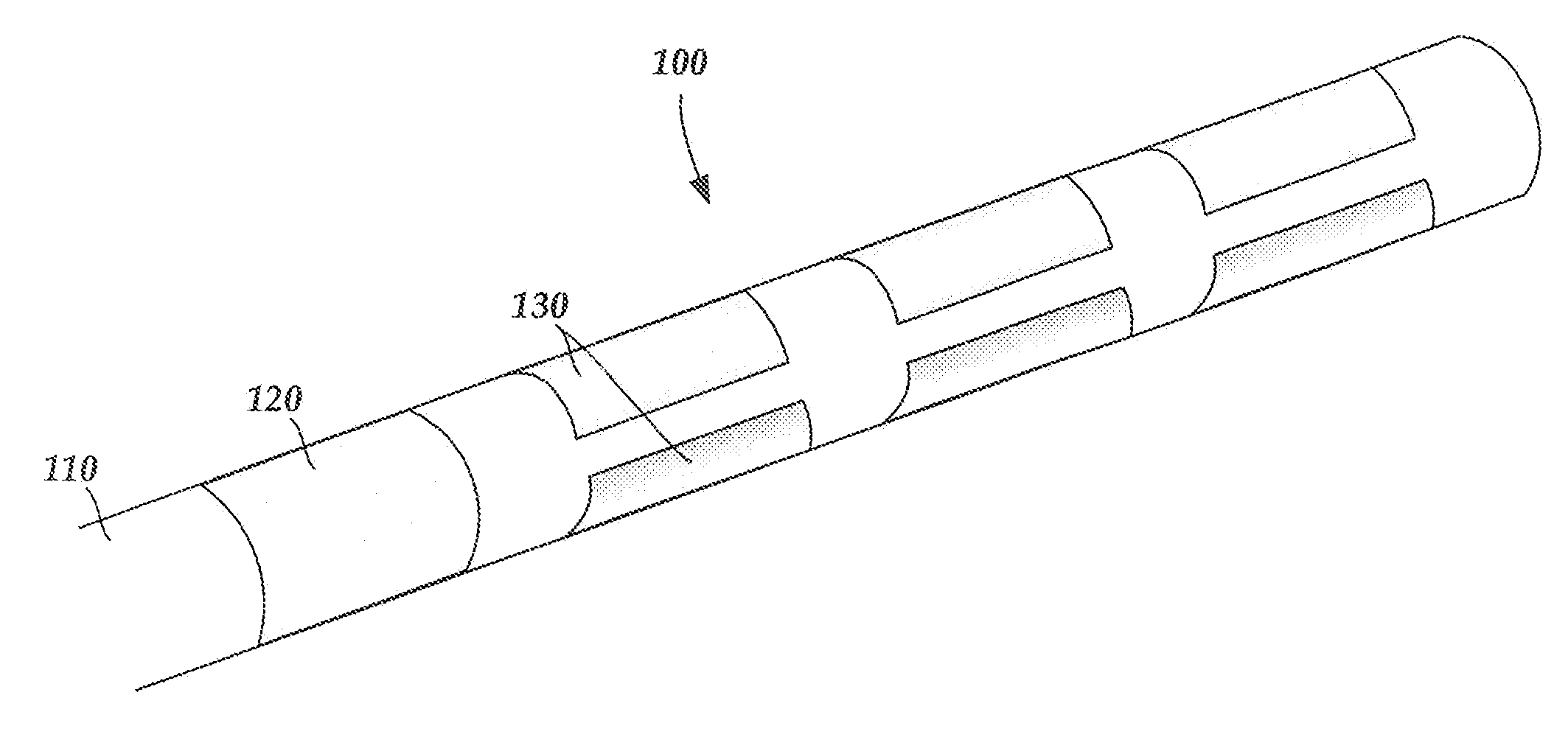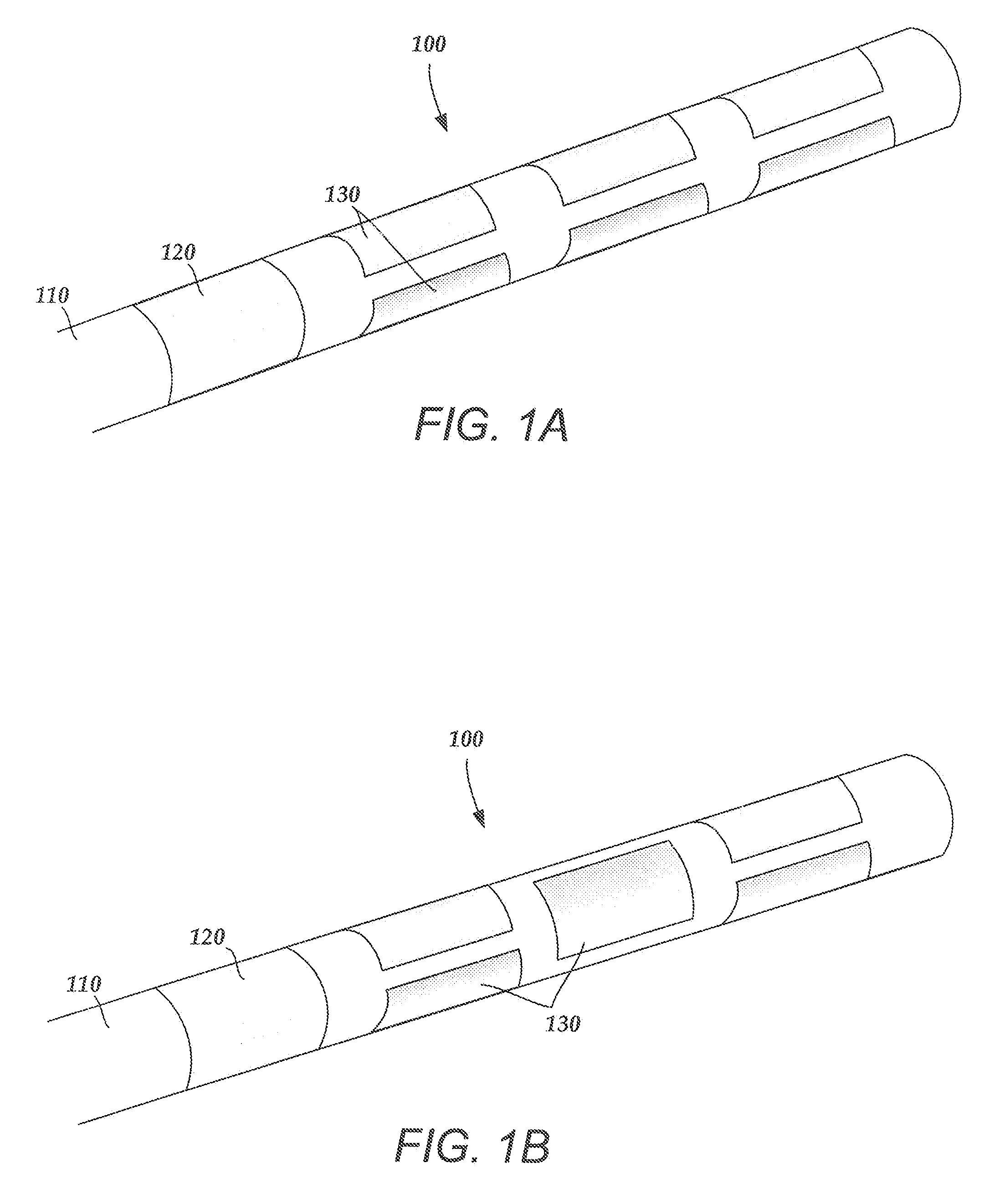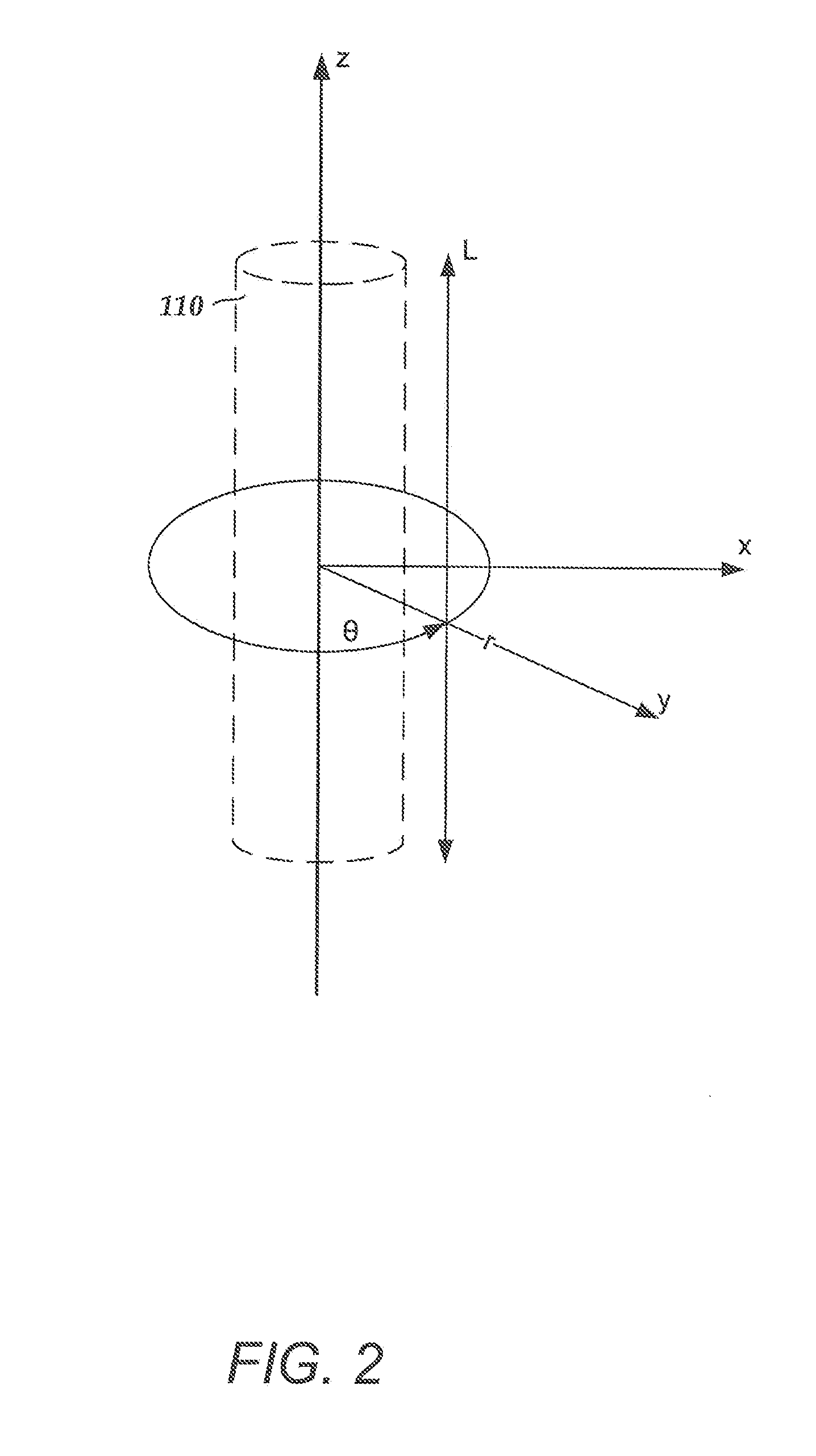Electrode array having a rail system and methods of manufacturing the same
- Summary
- Abstract
- Description
- Claims
- Application Information
AI Technical Summary
Problems solved by technology
Method used
Image
Examples
first embodiment
[0056]As previously indicated, any number of prongs 310 may be included in the rail 300. FIG. 4A is a schematic cross-sectional view of a rail 300 having three prongs 310. The cross-section of rail 300 corresponds to that of rail 300 described in FIG. 3. Because the rail 300 includes three prongs 310, up to three segmented electrodes may be coupled at each longitudinal level. Furthermore, as seen in FIG. 4A, the prongs 310 may be uniformly distributed about the rail 300 so that the angle between each prong 310 is the same. For example, in FIG. 4A the angle between each prong 310 is 120 degrees. Such a configuration will result in a radially segmented electrode array having segmented electrodes that are radially disposed 120 degrees apart. FIG. 4A also illustrates securing tabs 320, disposed at the end of each prong 310.
second embodiment
[0057]FIG. 4B is a schematic cross-sectional view of a rail 300 having two prongs 310. Though FIG. 4B illustrates two prongs 310 that are disposed 180 degrees apart, any angle between the two prongs 310 may be formed. For example, if the two prongs 310 are disposed 30 degrees apart, a V-shaped rail may be formed. For the purpose of discussion, the two-prong configuration shown in FIG. 4B may be referred to as the I-beam configuration. As seen in FIG. 4B, the rail 300 essentially includes two prongs 310 that are disposed end-to-end, so that they are joined. Essentially, the two prongs 310 may be said to create a single prong 310 having two pairs of securing tabs 320.
third embodiment
[0058]FIG. 4C is a schematic cross-sectional view of a rail 300 having four prongs 310. The four prongs 310 are uniformly distributed 90 degrees apart, with each prong 310 terminating in securing tabs 320. In at least some other embodiments, the prongs 310 are not uniformly distributed. The cruciform-shaped rail may be used to support up to four segmented electrodes at each level. Thus, the rail 300 of FIG. 4C may be used to support the 4-4 or a 4-4-4-4 configuration described above.
PUM
| Property | Measurement | Unit |
|---|---|---|
| Length | aaaaa | aaaaa |
| Shape | aaaaa | aaaaa |
| Circumference | aaaaa | aaaaa |
Abstract
Description
Claims
Application Information
 Login to view more
Login to view more - R&D Engineer
- R&D Manager
- IP Professional
- Industry Leading Data Capabilities
- Powerful AI technology
- Patent DNA Extraction
Browse by: Latest US Patents, China's latest patents, Technical Efficacy Thesaurus, Application Domain, Technology Topic.
© 2024 PatSnap. All rights reserved.Legal|Privacy policy|Modern Slavery Act Transparency Statement|Sitemap



